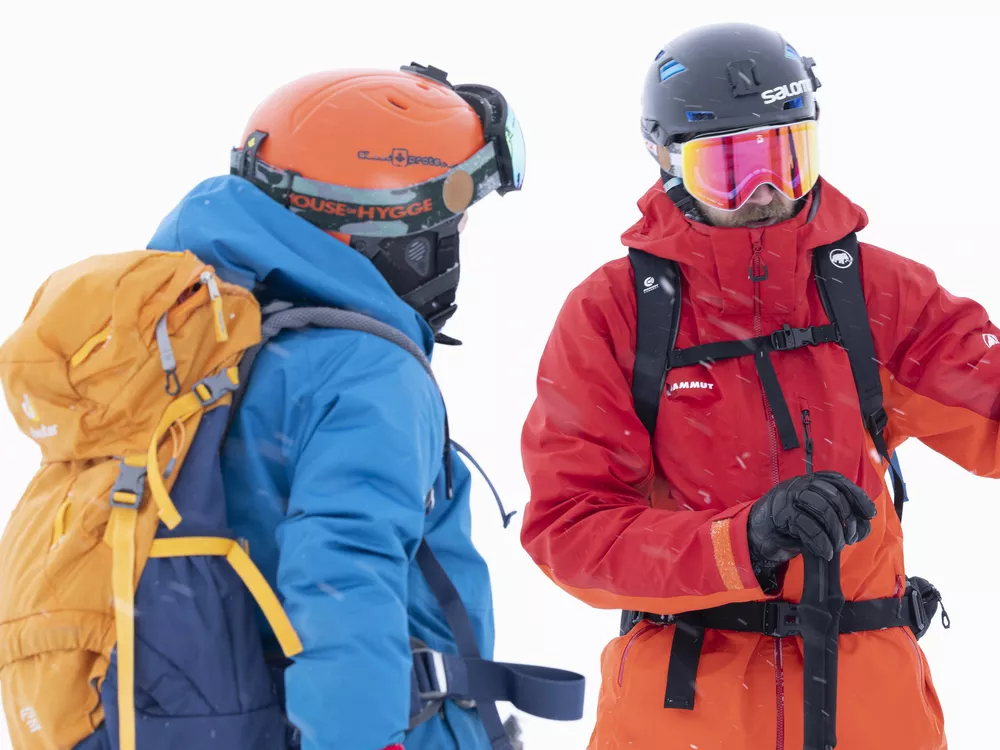What should you pack
for a mountain vacation

Dressing appropriately in the mountains is not just about comfort or fashion, it's about safety and respect for nature. When we provide ourselves with the right clothing, we give ourselves the opportunity to explore the mountains in a safer and more comfortable way.
by: Hanne
5
min
Updated
06 January 2025
Exploring the mountains is an amazing experience that can be enhanced with the right clothing. Whether you're planning a short day trip or a longer expedition, it's important to be well-prepared in terms of attire. Mountain weather is known for being unpredictable, and dressing appropriately is key to a comfortable and safe trip. Layering with functional clothing protects us from cold, wind, and weather changes, giving us the freedom to roam wherever we want, whenever we want.
Winter
- Ski jacket and pants: Waterproof and insulated.
- Ski socks: Thick, warm, and breathable.
- Wool underwear: Keeps you warm and dry.
- Warm fleece sweater: Extra insulation under the jacket.
- Mittens or gloves: Thick, insulated varieties.
- Ski goggles or sunglasses: Protects against the sun and snow blindness.
- Helmet: Important for safety on the slopes.
- Neck warmer/buff: Protects against wind around the face.
- Warm beanie: Keeps the head warm.
Summer
- Light and breathable summer jacket or sweater: Can be cooler in the mountains in the evening.
- T-shirt/shirt: Breathable and comfortable clothing.
- Shorts or light pants: For comfort and freedom of movement.
- Cap: Protects against the sun.
- Sunglasses: Protects eyes against strong sunlight.
- Footwear with good support: Hiking shoes or light mountain boots.
- Swimwear: If there are water bodies or rivers nearby.
Autumn
- Warm layers: Wool socks, wool shirts, fleece sweaters.
- Wind and waterproof outer layers: Jacket and pants that protect against rain and wind.
- Waterproof and sturdy footwear: Mountain boots or robust hiking shoes.
- Gloves or mittens: Protects the hands against cold and wind.
- Beanie or headband: Keeps the head warm.
- Neck warmer/buff: Can be used as extra protection against cold autumn winds

Advice from mountain guide Dan Halvorsen at Tindeliv
Wool closest to the body from top to toe.
- Preferably two layers of wool, the favorite when it's extremely cold is mesh wool long johns and shirt as the innermost layer, then another layer of wool.
- On the outside, pants and jacket - windproof.
- Tip, a down/primaloft vest under the outer jacket
- Down/primaloft shorts provide good warmth on the ski slopes
- Mittens are better than gloves in the cold. Many types of warm mittens on the market. A thick wool mitten, bought or homemade works well, then you should have a thin windproof mitten on the outside.
- Wool buff is better than cotton buff, a well-worn wool scarf is also comfortable to keep warm and can protect more around the neck
- Bring extra mittens/gloves in the backpack, it can quickly become critical if you lose a mitten.
- Cold cream on the face can be helpful.
Check each other's faces for white spots. Walk slowly, preferably in the sun if possible. Start with a lot of clothes and adjust as you warm up on the uphill. If you are in the resort, take breaks inside and warm your feet. Helmets protect the head and protect against cold, goggles and buff protect the face.
If you are very cold on your hands or feet, you must do something. The line between freezing your feet and getting frostbite is thin.

Wool from top to toe, and preferably multiple layers